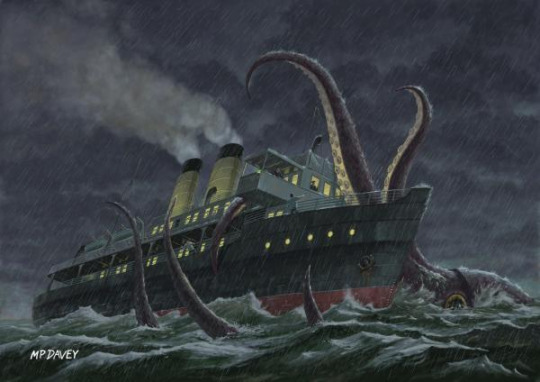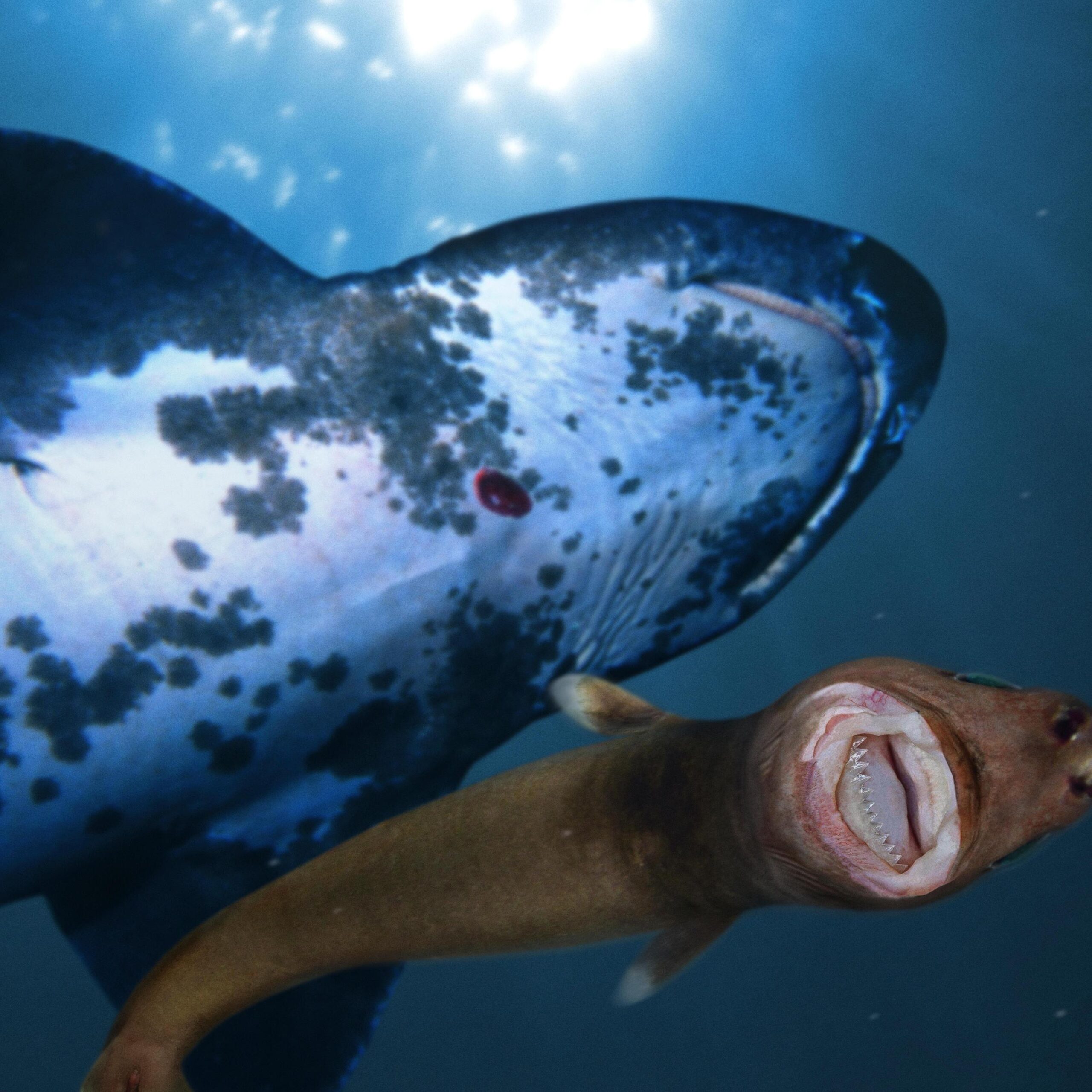Sea monsters are part of nature and sometimes nature doesn’t always agree with man.
Nature and man have formed strange and sometimes dangerous relationships on the high seas. The military has encountered various sea creatures during their operations, creating both respect and fear for the ocean. These experiences range from close encounters with predators to previously unexplained phenomena that have advanced scientific understanding.
There have been times when the military has fought sea creatures and times when they have fought back. This list focuses on real-life examples of when fighting forces of the world faced off against beasts from the deep, omitting myths and legends of sea monsters from history.
10) The Gulf of Tonkin

The USS Maddox incident in 1964 sparked the Vietnam War. During the confrontation between North Vietnamese warships and the United States, the USS Maddox fired 380 shells and dropped depth charges in an attempt to destroy North Vietnamese torpedo boats. However, despite air support, no boats were seen.
In 1966, a marine biologist named Todd Newberry spoke with a sonar engineer who had been present during the incident. The engineer described objects on the radar that behaved as though they had a will of their own.

Cc: New scientist
Newberry hypothesized that these objects were actually pyrosomes, a rare type of organism made up of thousands of individual creatures forming a large floating structure. Pyrosomes are transparent sea monsters that can grow up to 60 feet (18 meters) in length, resembling a giant tube-like jellyfish without tentacles.
Pyrosomes emit a bright light, which explains the reports of lights on the evening of the incident. These lights were mistaken for enemy cockpits and searchlights. Pyrosomes not only appear on sonar but can also be seen at a distance due to the light they emit, which gives them their name – fire body.
9) USS Stein Squid Incident

In 1978, the USS Stein, a frigate of the United States Navy, encountered an unexpected situation while on special operations in the Pacific Ocean. The ship’s system responsible for identifying submarine threats suddenly malfunctioned. The vessel had to return to the dock, where it was found that the sonar system had large gashes, each measuring four feet (1.2 meters) in length, with huge teeth inside them.
On closer examination, the teeth-like structures were identified as claws from a suction cup of a squid. The largest squid ever discovered was approximately 43 feet (13 meters) long and weighed over 2,000 pounds (907 kilograms). The claws found on the USS Stein are said to belong to a squid sea monster that is more than three times this size.
Navy biologist F.G. Wood, who investigated the claws, couldn’t rule out the possibility of this being an undiscovered species new to science. The largest species of squid are hunted by sp*rm whales, and these whales are frequently observed with large wounds and scars, damage similar to the sonar system. These two sea monsters are known to fight each other, so it’s possible that the giant squid may have mistaken the ship for a whale.
8) Sharks in WWII

During the Second World War, shark attacks were not considered a threat by the US Navy’s research and development branch. It was believed that sharks were not interested in objects floating in the sea and were of “insignificant danger to personnel.” However, the naval battles of WWII in tropical waters proved otherwise.
Lieutenant Arthur George Reading’s experience in 1943 highlights the dangers of shark attacks. After crashing into the sea, Reading and Radioman Everett Hardin Almond fought off the sea monsters for 16 hours. Almond was wounded, and his blood attracted a cloud of sharks, which repeatedly attacked him, tearing his leg apart.
Despite using his binoculars to defend himself and keep Almond afloat, Reading was hit by a shark’s tail, breaking his jaw. Almond eventually succumbed to the shark attacks, leaving Reading to survive alone.
7 The Worst Shark Attack in History

In 1945, the USS Indianapolis, a U.S. Navy cruiser, was tasked with delivering enriched uranium for the atomic bomb “Little Boy.” After completing its mission, it set sail for the Philippines with a crew of 1,195. However, it was attacked by a Japanese submarine, sinking the ship in 12 minutes and leaving 900 crew members adrift at sea.
To make matters worse, the sailors were soon surrounded by hundreds of sharks drawn to the noise and scent of blood. The survivors fought off constant attacks from oceanic whitetip sharks for three and a half days using whatever means they had, including their bare hands.
Dehydration, exposure, and attacks from these sea monsters took their toll, and only 316 sailors were left alive when rescue boats arrived. Some sailors had even chosen su*cide over facing the relentless attacks from the sharks.
6 Military Attack Dolphin

Since the early 1960s, militaries have utilized dolphins and whales for various purposes. Once trained, these intelligent creatures can perform essential tasks like identifying torpedoes and mines and delivering tools. Dolphins, specifically, can remove facemasks from divers, forcing them to the surface or tag them with a floating buoy or clamp attached to their leg, making it easy for a boat to pull them out of the water quickly.
However, there have been rumors that dolphins can be fitted with a face harness to which lethal options like pistol “bangsticks” and “wasp knives” that inject explosive gas can be attached. In recent years, evidence from Hamas in Palestine has emerged, showing a dolphin face harness with a speargun attachment. Hamas claims that this harness belonged to an Israeli dolphin that they referred to as a hostile aquatic unit, which chased one of their divers.
5) UB-85 Sea Monster

Captain Günther Krech and his crew were captured by the British warship, the HMS Coreopsis, on April 30th, 1918. Krech initially claimed that his damaged submarine couldn’t dive due to an attack by a sea monster. He described the creature as horned, with small, deep-set eyes, masses of monstrous teeth, and a small head, which climbed onto the vessel and caused it to take on water. However, recently released records revealed the truth.
According to crew member Göttschammer, Kretch had requested a heater for the officers’ compartment, which required cabling to be run from the sub through the main hatch, leaving it unsealed. When the British warship was spotted, the hatch was closed, and the sub was ordered to dive.
Unfortunately, the hatch failed, causing the sub to fill with seawater and resurface. With no other option, the crew surrendered. Thus, the sea monster story was a cover-up for the sub’s malfunction due to incompetence.
4 Russian Arctic Expeditions

The Arctic Circle encompasses a vast portion of Russia, and military and research activities in the region are facilitated by a unit of the Russian navy known as the Northern Fleet. However, landing on many of the islands within this region is a challenging endeavor, as one may immediately encounter ravenous bears.
Leonid Kruglov, a Russian reporter, recounts an expedition to Alexandra Land where a bear relentlessly pursued the team despite attempts to deter it. Hunger has driven these bears to ignore their basic instincts and become increasingly aggressive in their search for sustenance.
In 2019, a landing on another island faced a different challenge – walruses. These large creatures can weigh as much as a Dodge Charger, and a female was suspected of attacking the landing craft to protect her young.
The walrus successfully boarded and sank the small boat before the crew could reach Wilczek Island. Fortunately, everyone made it safely to shore and was rescued through the well-coordinated actions of the Northern Fleet servicemen.
3) Attacks on Nuclear Submarines

In the 1970s, Ohio-class submarines played a critical role in America’s nuclear triad, which was the land, air, and sea delivery system for nuclear warfare. If the Cold War had heated up, the Ohio class would have been prepared. They are still the largest submarines ever built by the U.S. Navy, weighing in at 18,750 tons (17,000 metric tons) and costing billions.
While at sea, the submarines began to experience occasional issues with their sonar domes, electrical cables, sound probes, and oil lines, causing concerns that Russia had developed undetectable technology to sabotage their equipment.
However, the true saboteur was not Russian, but rather a tiny 18-inch (46-centimeter) cookiecutter shark that latches onto much larger prey and removes chunks of flesh. Fishermen have long known of their presence from circular wounds on larger fish like tuna, but it was not until the 1970s that the conical flesh plugs extracted from their prey were discovered in the stomach contents of these peculiar animal. To protect their vulnerable spots, submarines today have hard fiberglass housings.
2) HMS Brilliant Fires on Whales

During the Falklands War in 1982, the British deployed a fleet to the South Atlantic to safeguard their aircraft carriers from potential Argentinian attacks. Unfortunately, the presence of whales in the area posed a significant challenge for the crew, as their sonar often mistook the large echoes of these marine mammals for submarines. As tensions ran high, torpedoes were fired at what were thought to be submarines, resulting in the deaths of two whales.
As a response, air support was deployed from the ship, leading to the death of a third whale by a helicopter. The crew often launched torpedoes in reaction to sonar signatures that resembled submarines, which could easily have been whales. Not only did this disrupt their sonar systems, but it also posed a threat to the safety of the ships themselves.
After twelve months of the campaign, the ship collided with another whale, causing severe damage to its hull, which necessitated a return for repairs. Numerous other ships also collided with whales, resulting in similar harm. It appeared that whales were pervasive in the area and had become an unfortunate casualty and risk of war.
1 War on Orcas

It may be surprising, but in the not-so-distant past, orcas were despised by humans due to misinformation, folklore, and legends that portrayed them as ferocious creatures.
Until the 1970s, the U.S. Navy instructed their divers to avoid orcas at all costs, as they were believed to be prone to attacking humans at sea. While it is true that these so-called k*ller whales are natural predators capable of hunting down even the largest of whales, there has never been a documented incident of a wild orca attacking a human.
In 1956, the Icelandic government requested the help of the U.S. Navy to address the problem of orcas preying on their herring fishery. The U.S. responded by deploying an anti-submarine air squadron equipped with 50-caliber machine guns, aircraft rockets, and depth charges to target the orcas.
Similarly, in British Columbia, salmon fishermen urged their government to install heavy artillery guns on hillsides overlooking the inland waterways. However, it was not until orcas were held in captivity that we discovered they were sociable and intelligent animals.